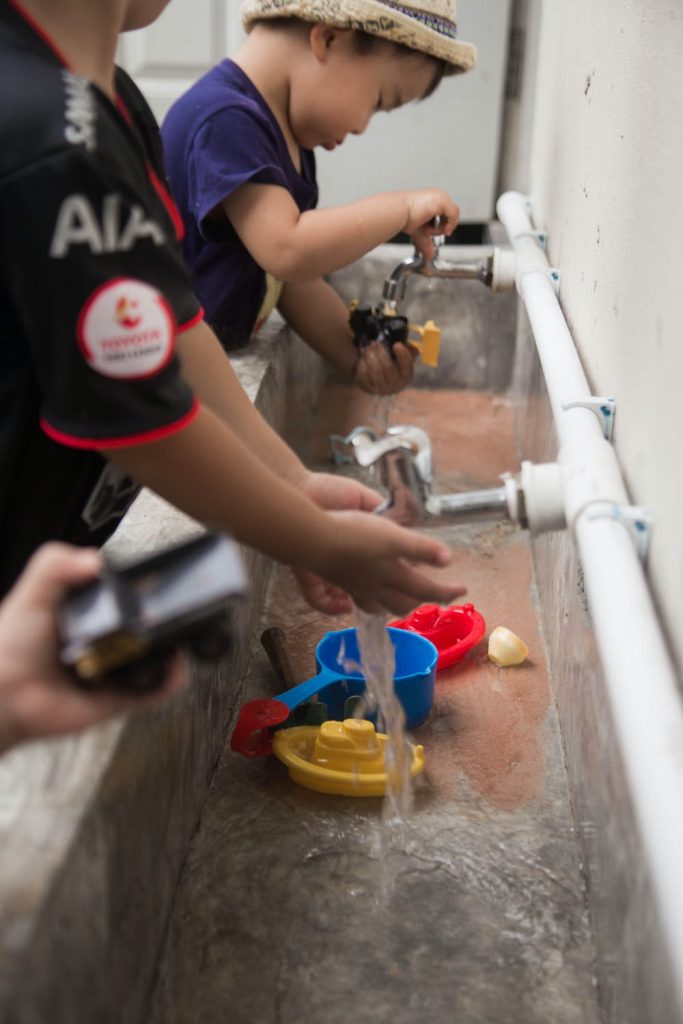3.5 Cleaning and Disinfecting

Cleaning and maintaining a healthy early years setting requires some light housekeeping tasks to prevent the spread of illness. Some tasks may be undertaken multiple times per day, while other tasks may be conducted daily or weekly. An excellent way to ensure these tasks are shared and completed is to develop a cleaning chart for the learning space. All team members can share in these duties to ensure one member of the team isn’t overwhelmed with maintaining the cleanliness of the classroom environment. View the example below of a cleaning chart to understand how often particular tasks should be undertaken.
Download (PDF)
Please download and view the example below of a cleaning chart to understand how often particular tasks should be undertaken.
- Cleaning and Disinfecting Schedule [PDF] from Simcoe Muskoka District Health Unit
Cleaning tasks may include wiping down tables and chairs, sweeping and mopping the floors, wiping down surfaces and materials, laundry, changing bedding, and ensuring a general tidiness of the classroom to keep it safe for those using the space. Disinfection involves a deeper cleaning to ensure surfaces are free from pathogens. Educators will ensure change tables, toilets, sinks, cribs, cots, and surfaces are disinfected regularly to reduce the spread of illness and infections. Tables and toys are disinfected with food safe solutions to ensure children are not ingesting chemicals. Deeper daily cleaning is typically conducted by a third-party, custodian, or employee hired specifically for cleaning duties. This will take place after hours and may include vacuuming, washing the floors, and cleaning the bathrooms.
Cleaning and Disinfecting Solutions
Bleach and water solutions are the most common and least expensive disinfection products to use in early years settings. Bleach solutions should be prepared daily to ensure the efficacy of the disinfectant. Safe preparation of cleaning solutions will be discussed later in this textbook.
Download (PDF)
Please download and view the example below of how to mix a bleach solution for disinfecting:
- Mixing of Chlorine (Bleach) Solution for Disinfecting [PDF] from Middlesex-London Health Unit.
Low and intermediate-level chlorine (bleach) solutions are most commonly used in early years settings. Intermediate-high level chlorine solutions are used when an enteric outbreak has been declared. Public health units will work with licensed child care settings to determine when an outbreak is taking place and will outline steps to take to ensure the outbreak is contained. This may involve increasing the level of disinfection and making modifications to the exclusion policy.
Some early years settings may use different products for disinfection. Specific training may be required for the proper storage, handling, and use of these products. Health and safety measures related to the use of cleaning products will be discussed in Chapter Five. Educators must be knowledgeable about the protocols necessary to keep themselves, the children, and others safe when handling chemicals or cleaning products.

